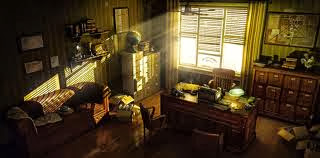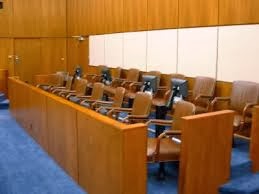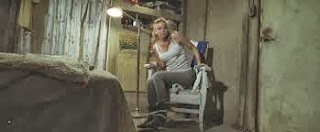A2 Media Studies Blog for Parallel Pictures. Chloe Barker (8004), Nicole Moulder (8090), Kira Welland (8146). The school Centre number is 61681.
Wednesday, 16 October 2013
Target Audience Survey
We wrote up a target audience survey to gather some research on the typical person who would want to see our movie.
The link to the survey is here
The link to the survey is here
Genre Research - Genre Theory & Narrative Theory
Here is a presentation we did whilst researching narrative theory and genre theory, as well as looking at the aspect of challenging codes and conventions. To help us practise with the equipment and technology we may use for our trailer we used a green screen and edited the presentation using After Effects. We also filmed a two short scenes in research for codes and conventions that link to this presentation which you can see here.
Genre Research - Challenging Codes & Conventions
Here are two short scenes we filmed linking to our presentation researching genre that challenges typical codes and conventions. We used the same footage but edited it differently using the romantic codes and conventions for one and the codes and conventions of horror for another. However, we changed one conventional object at the end of each scene to challenge the typical stereotype.
Tuesday, 15 October 2013
Iconic Social Realism Directors
Iconic Social Realism Directors - slideshows
Iconic Thriller Film Directors here.
Sources:
Screen Online
Wikipedia
Karel Reisz
The Guardian
John Schlesinger
Tony Richardson
Ken Loach
Iconic crime/mystery directors
To be able to produce a high quality film that clearly shows the chosen genres, it is necessary to research into the directors who have been most successful in their feild. Below is the top 5 directors of crime and mystery films and titles of their best work according to 'toptenreviews.com'
Codes and conventions of mystery
Definitions of the mystery genre:
'Mystery film is a sub-genre of the more general category of crime film and at times the thriller genre. It focuses on the efforts of the detective, private investigator or amateur sleuth to solve the mysterious circumstances of a crime by means of clues, investigation, and clever deduction.'
http://en.wikipedia.org/wiki/Mystery_film
'Anything that is kept secret or remains unexplained or unknown: the mysteries of nature.
Any affair, thing, or person that presents features or qualities so obscure as to arouse curiosity or speculation: The masked guest is an absolute mystery to everyone.
Any truth that is unknowable except by divine revelation.'
http://dictionary.reference.com/browse/mystery
History of Thrillers
History of Thrillers
Early Thrillers in the 1920/30's
- Alfred Hitchcock helped to promote the thriller genre when making a silent film called 'The Lodger' which was about Jack the Ripper.
- This is about a landlady who suspects her new lodger is the madman killing women in London.
- His next thriller was Blackmail (1929), which was hit and Britain's first sound film.
- Of Hitchcock's fifteen major features made between 1925 and 1935, only six were suspense films, but from 1935 most of his outputs were thriller.
- Notable examples of Hitchcock's early British suspense-thriller films include The Man Who Knew Too Much (1934) and also his first spy-chase/romantic thriller, The 39 steps (1935).
Thrillers in the 1940's:
- In the 1940s Hitchcock continued to direct suspense thrillers.
- He produced two more thrillers, one of which won an oscar, which was Rebecca. The other film he produced was was Foreign Correspondent.
- George Cukors psychological Thriller "Gaslight' (1944) was about a husband who plotted to make his own Wife go insane in order to inherit her inheritance.
- The second film by George of this year was a film called "Noir" which was about a thrilling murder investigation made by police detective Dan Andrews.
- In the 1940s there were many other thrillers released such as, The Spiral staircase in 1946 The Lady From Shanghai in 1948, Sorry Wrong Number in 1948 and also The Third Man in 1949.

Thrillers in the 1950's
- In the 1950's Hitchcock started to add technicolour to his films.
- He also started to include glamorous stars and exotic locales.
- He reached the zenith of his career with a succession of classic films such as, Strangers on a Train (1951). Which is about two train passengers who stage a battle of wits and traded murders with each other.
- Non-Hitchcock thrillers films of the 1950s include Niagara (1953) by Henry Hathaway, with Marilyn Monroe as the trashy femme fatale who schemes to kill her unstable husband.
- Orson Welles' unique crime thriller, Touch of Evil (1958) with a pre-Psycho Janet Leigh as a terrorised wife, Charlton Heston as a Mexican narcotics agent, and the director himself as an evil border town cop.
Thrillers in the 1970's:
- There was a violent start to the 1970s as the film, Frenzy (1972) which was Hitchcock's first film in two decades, which was given an R rating due to its vicious and explicit strangulation scene.
- Steven Spielberg's low budget early TV movie Duel (1971), which got a cult following, was about road rage between a hapless travelling salesman and the unseen, relentless driver of a truck.
- The decade ended with Phillip Noyce's Dead Calm (1989), which was a psychological thriller with Nicole Kidman, who had to fight for her life on a yacht against a crazed castaway.
- This thriller has elements of obsession and trapped protagonists who must find a way to escape the clutches of the villain.
- These devices influenced a number of thrillers in the following years.
Monday, 14 October 2013
Sunday, 13 October 2013
Costume & Prop Research - Costumes & Props in Genre
I did some research into costumes and props common to the three main genres we are interested in:
Crime
- Trenchcoat (detective), suit (smart), trilby - influenced by Sherlock Holmes, trademark detective look
- Masks, gloves, white overalls (forensics)
- Cameras (crime scene)
- Evidence of crime (gun, broken glass etc)
- "Police Line" tape (crime scene)
- Police cars
- Police Uniform
- Newspaper clippings (detective research)
- thumbprints
Social Realism
- Focus' on normal life - meant to be relatable
- Clothes and costumes depend on the fashions of the era (eg This Is England - set in the 80s)
- Includes drama, so often knife/gun/weapon/drugs involved)
Thriller
- Often separated into sub-genres (e.g. crime thriller or action thriller) so costuming largely depends on that
- However, thrillers include some kind of action, and so weapons (most likely guns) are usually involved (House At The End of the Street, Psycho)
Kira Welland
Crime
- Trenchcoat (detective), suit (smart), trilby - influenced by Sherlock Holmes, trademark detective look
- Masks, gloves, white overalls (forensics)
- Cameras (crime scene)
- Evidence of crime (gun, broken glass etc)
- "Police Line" tape (crime scene)
- Police cars
- Police Uniform
- Newspaper clippings (detective research)
- thumbprints
Social Realism
- Focus' on normal life - meant to be relatable
- Clothes and costumes depend on the fashions of the era (eg This Is England - set in the 80s)
- Includes drama, so often knife/gun/weapon/drugs involved)
Thriller
- Often separated into sub-genres (e.g. crime thriller or action thriller) so costuming largely depends on that
- However, thrillers include some kind of action, and so weapons (most likely guns) are usually involved (House At The End of the Street, Psycho)
Kira Welland
Social Networking - Instagram
Social Networking - Instagram
Social Networking - Instagram
Our media group has created an Instagram account, where we can upload photos to our account to show people our progress and also what we are currently working on.
Social networking: Twitter
We created a twitter account for future promotion and research gathering which will benefit our trailer as well as acting as a progress tracker for the group as we will keep the account updated with details on our filming, editing, etc. Regular updates and following other film/media related accounts will increase awareness of the trailer through gaining twitter followers.
Location Research - Locations in Genres
Obviously the locations used largely depend on the movie itself, but there are some locations you would expect to see in certain genres. I have looked into this in the three main genres we are considering for our film trailer to think about what locations we need to use.
Crime/Mystery
In a movie to do with crime or mystery you would expect to see the office of the detective to show their work and progress, as well as the crime scene itself. Another common location used in crime movies is the Interrogation Room, where the suspect is questioned, and the Trial Room, where the suspect is held before the judge and jury.


Social Realism
 Social realism movies usually follow the life of one or several main characters and show everything personal to them, an so we would expect to see their house or room and the area they live in, as well as the social scene of the area they live in and any specific place special to that character (the beach, a shelter in a park etc).
Social realism movies usually follow the life of one or several main characters and show everything personal to them, an so we would expect to see their house or room and the area they live in, as well as the social scene of the area they live in and any specific place special to that character (the beach, a shelter in a park etc).

Thriller
Thrillers are designed to take people by surprise, and so generally they use location that have a little bit of edge to them and make the audience feel tense, such as an abandoned building or a dark wood, as this isolates the character and creates a number of possibilities that could happen in the storyline.


Kira Welland
Crime/Mystery
In a movie to do with crime or mystery you would expect to see the office of the detective to show their work and progress, as well as the crime scene itself. Another common location used in crime movies is the Interrogation Room, where the suspect is questioned, and the Trial Room, where the suspect is held before the judge and jury.


Social Realism
 Social realism movies usually follow the life of one or several main characters and show everything personal to them, an so we would expect to see their house or room and the area they live in, as well as the social scene of the area they live in and any specific place special to that character (the beach, a shelter in a park etc).
Social realism movies usually follow the life of one or several main characters and show everything personal to them, an so we would expect to see their house or room and the area they live in, as well as the social scene of the area they live in and any specific place special to that character (the beach, a shelter in a park etc).
Thriller
Thrillers are designed to take people by surprise, and so generally they use location that have a little bit of edge to them and make the audience feel tense, such as an abandoned building or a dark wood, as this isolates the character and creates a number of possibilities that could happen in the storyline.


Kira Welland
Friday, 11 October 2013
Monday, 7 October 2013
Wednesday, 2 October 2013
Subscribe to:
Comments (Atom)























